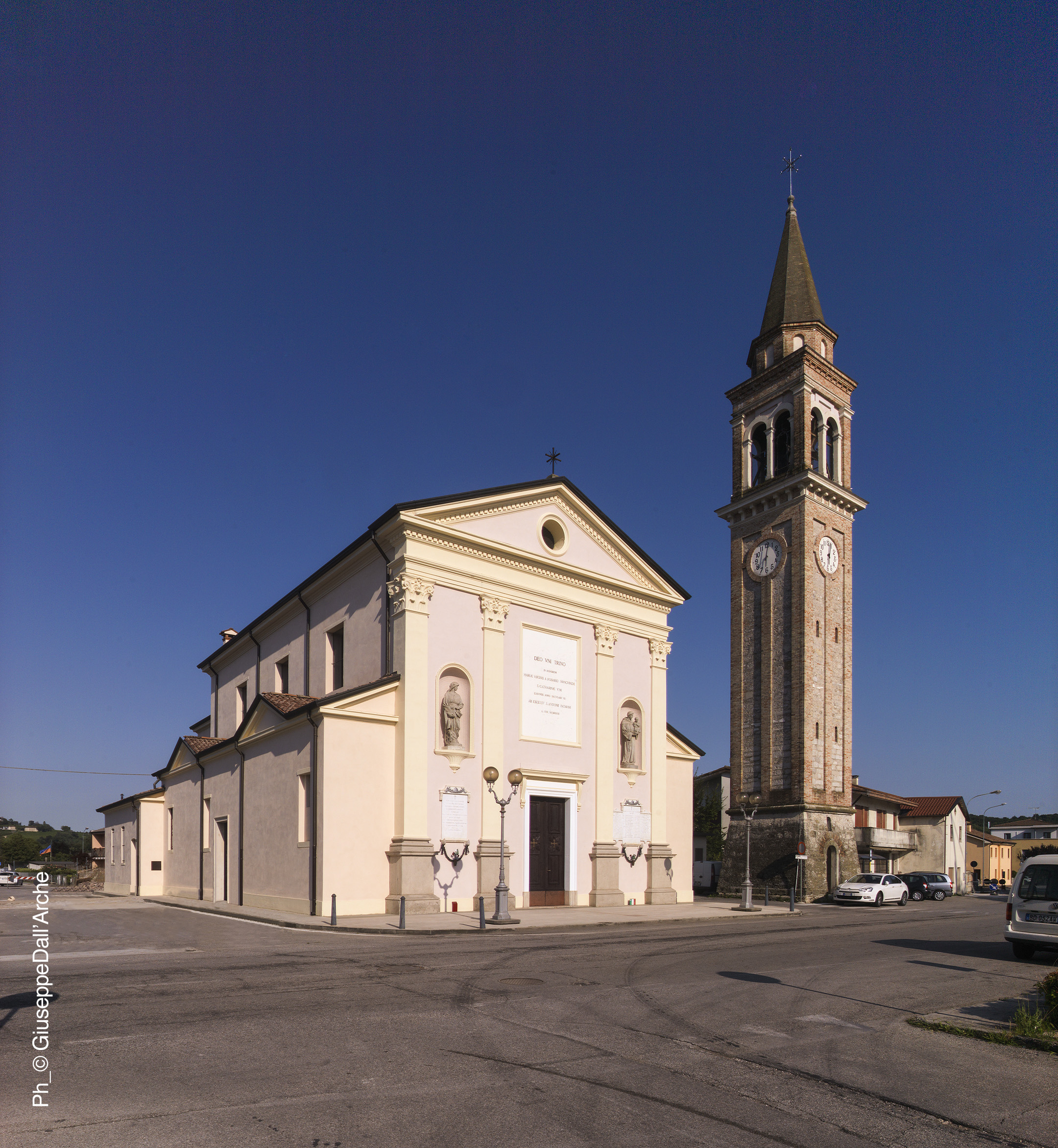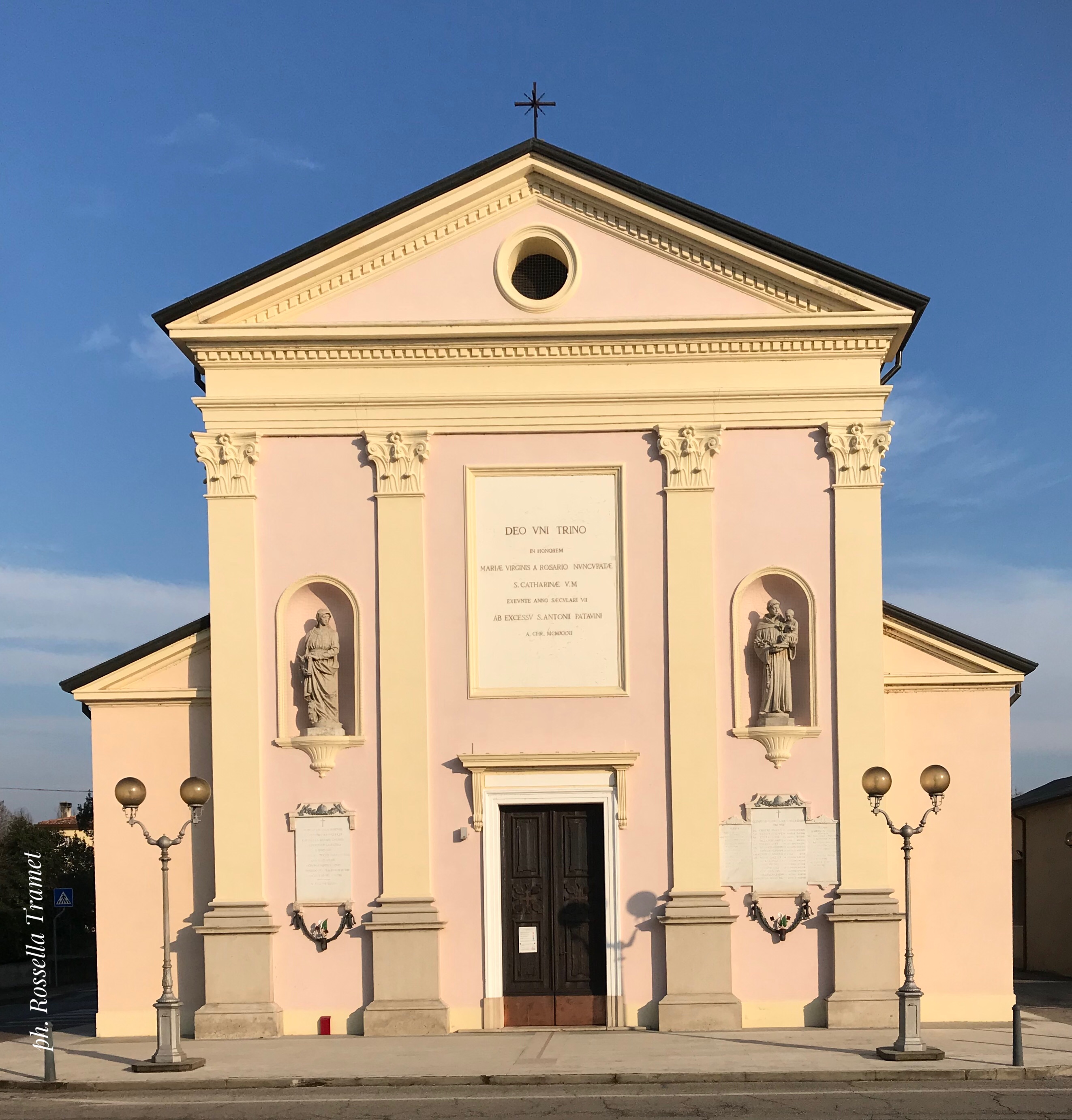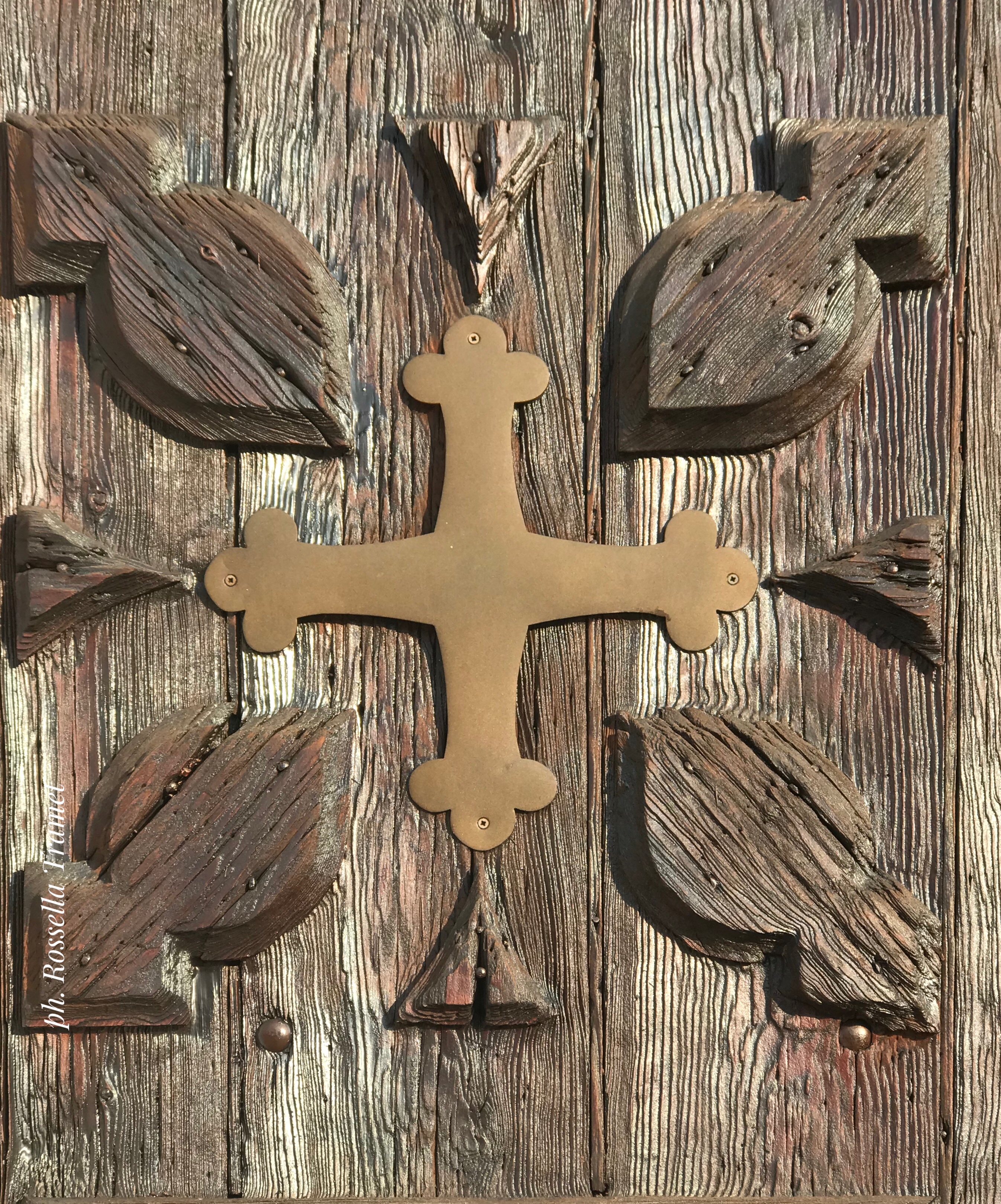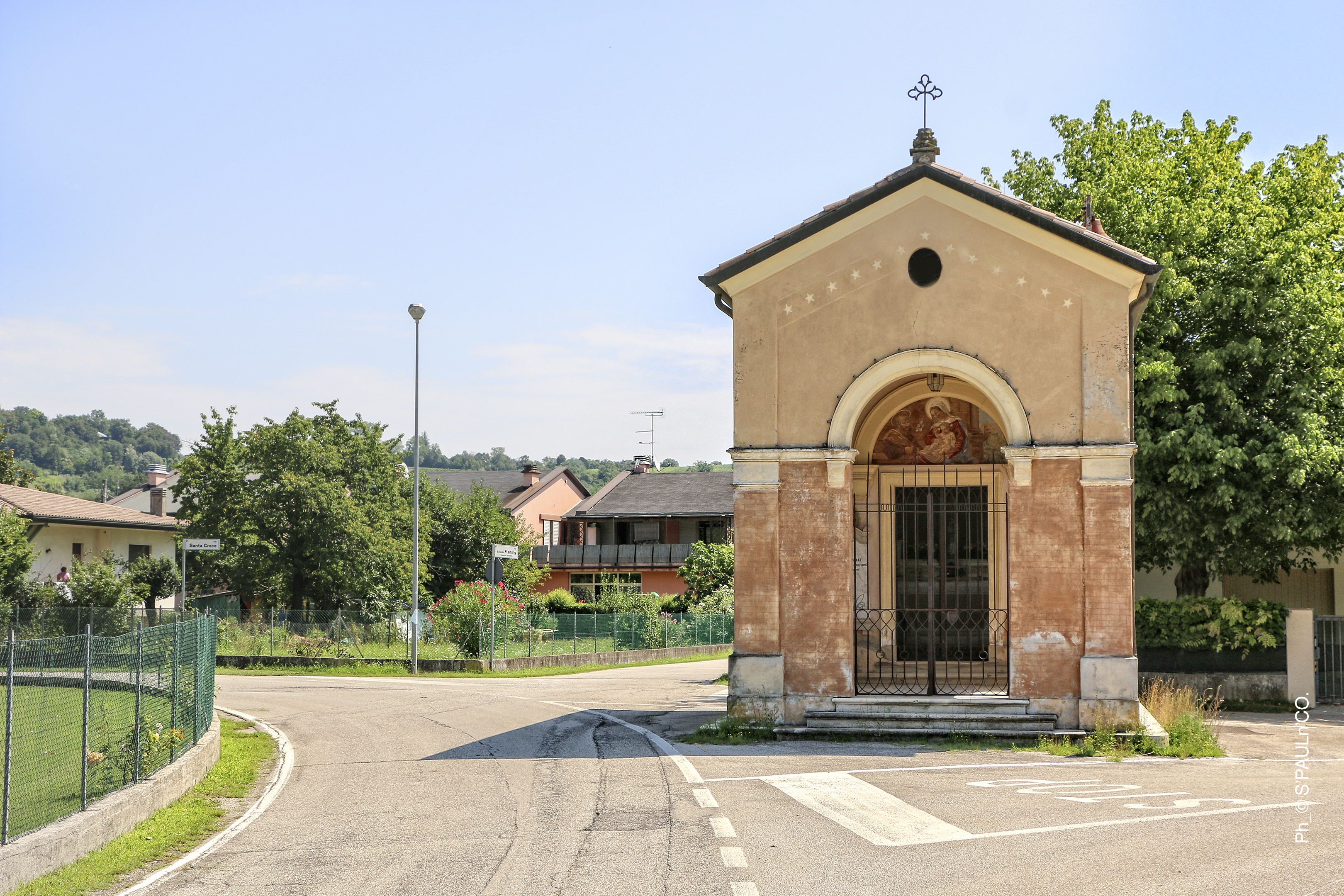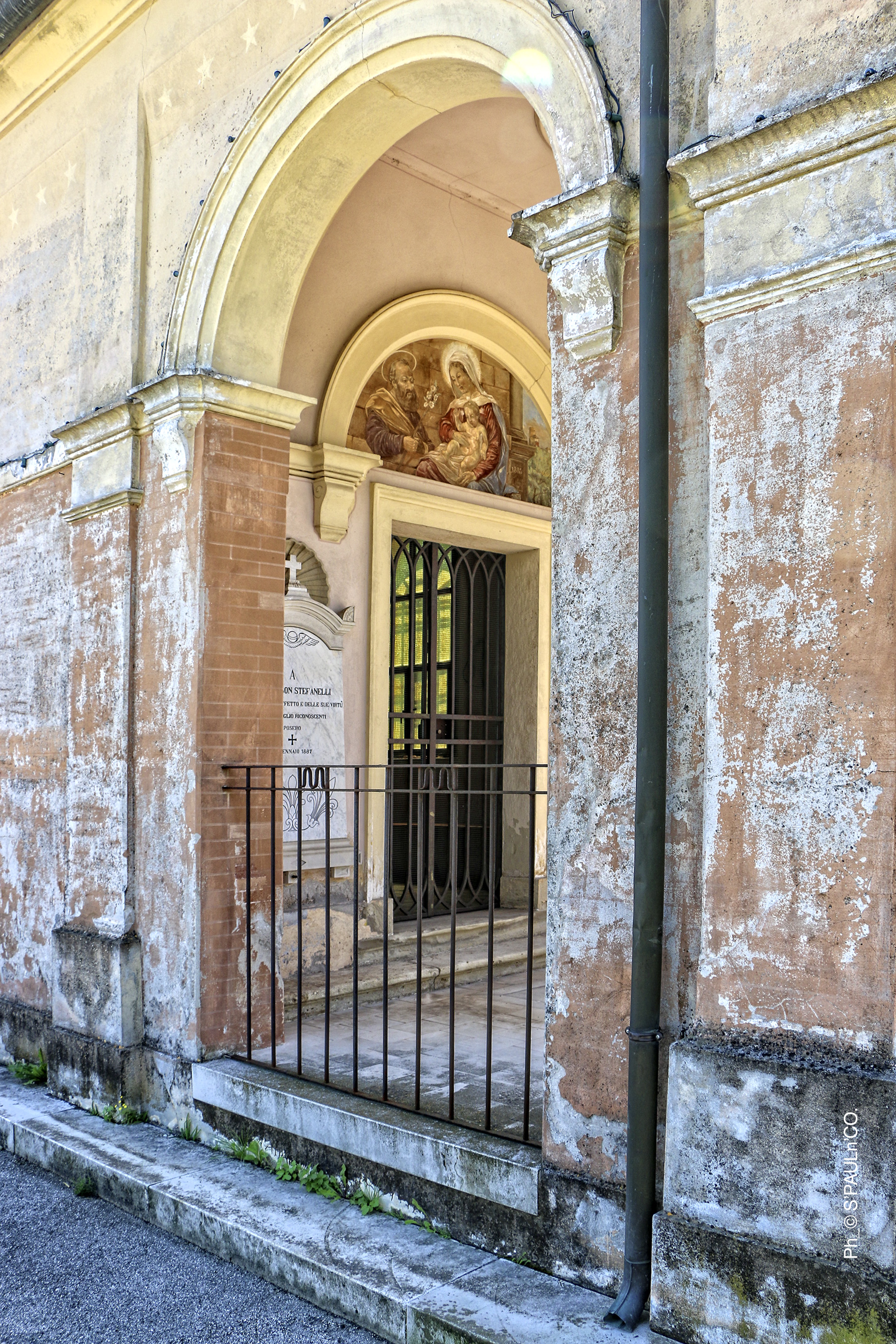Chiesa di S. Caterina di Barbisano e oratorio di Santa Croce
 Chiese
Chiese
Descrizione
La prima testimonianza scritta sulla chiesa risale al 1350, come cappella filiale della chiesa matrice di Pieve di Soligo.
Essa rimase per molto tempo curazia e fu elevata a parrocchia verso la metà del XVI° secolo. Nel XVI° secolo la chiesa, andata a sostituire l'edificio originario, risultava posizionata verso il centro della piazza, con il campanile incorporato a sinistra.
97 Nel Settecento si provvide alla costruzione di un nuovo edificio, poi demolito nel 1902 per far posto alla chiesa attuale. Rispetto alla precedente, questa nuova chiesa era più ampia e spostata più a ovest.
Notevolmente danneggiata dalla prima guerra mondiale, fu in buona parte restaurata e riconsacrata nel 1929. Al suo interno l'originale vasca battesimale tardo seicentesca e opere di Giovanni Zanzotto e Guido Pini.
L'oratorio di Santa Croce é un tempietto cristiano in posizione retrostante, ad est rispetto alla chiesa. Ffu costruito nel 1885, per dare sistemazione alla
Croce della Passione in legno, da tempo immemorabile presente sul luogo. Un affresco raffigurante la Sacra Famiglia, opera di Barnaba Lava, mostra
sullo sfondo il castello di Collalto, così come si presentava prima delle devastazioni belliche della prima guerra mondiale.
La chiesetta passò in epoca successiva in proprietà alla famiglia Stefanelli, come tomba di famiglia (1887-1901). Durante i lavori di costruzione della nuova parrocchiale, ospitò anche le funzioni religiose.
The first testimony written on the church dates back to 1350, as chapel of the matrix church of Pieve di Soligo.
It remained for many years the second church and was elevated to parish in the middle of XVI century. During this century, the church, which substituted the original building, resulted positioned towards the centre of the square, with the bell tower incorporated on its left.
In the Eighteenth Century a new building was constructed, later demolished in 1902 to make room for the current church. In confront to the precedent one, this new church was larger and more to the west. Incredibly damaged by WWI, it was greatly restored and re-consecrated in 1929.
Inside, the original late-sixteenth-hundred baptismal tank and works by Giovanni Zanzotto and Guido Pini.
Near the church a little Christian temple in the back position, to the east with respects to the church, was built in 1885: The oratory of Santa Croce (Holy Cross)
In order to accommodate the wooden Cross of the Passion, for a long time unmemorable present on the place. A fresco portraying the Sacred Family, work by Barnaba Lava, shows on the background the castle of Collalto, as it was before the war devastation of WWI.
The little church passed later to the property of the Stefanelli family, as family tomb (1887-1901). During the building works of the new parish, it hosted also
religious functions.
Zum ersten Mal wurde die Kirche, damals eine Nebenkapelle der Mutterkirche von Pieve di Soligo, im Jahre 1350 schriftlich erwähnt.
Lange Zeit diente sie als Kuratie und wurde erst gegen Mitte des 16. Jahrhunderts zur Pfarrkirche erhoben. Im selben Jahrhundert befand sich die Kirche, die das ursprüngliche Gebäude ersetzte, in zentraler Position auf dem Platz mit einem angebauten Glockenturm auf der linken Seite.
Im achtzehnten Jahrhundert entstand ein neues Gebäude, das 1902 abgerissen wurde, um Platz für die heutige Kirche zu schaffen. Im Vergleich zu der vorherigen war dieses neue Gotteshaus größer und stand weiter westlich.
Es wurde im Ersten Weltkrieg stark beschädigt, dann größtenteils restauriert und 1929 wieder geweiht. Im Innenbereich befinden sich das Original-Taufbecken aus dem späten 17. Jahrhundert sowie Werke von Giovanni Zanzotto und Guido Pini.
Das Oratorium Santa Croce ist ein kleiner christlicher Tempel im rückwärtigen Bereich, östlich von der Kirche. Es wurde 1885 errichtet, um dem hölzernen Passionskreuz Platz zu bieten, das sich seit Menschengedenken dort befindet.
Ein Fresko von Barnaba Lava, das die Heilige Familie darstellt, zeigt im Hintergrund die Burg von Collalto, wie sie vor den Verwüstungen des Ersten Weltkriegs aussah.
Später ging die Kirche als Familiengrabstätte (1887-1901) in den Besitz der Familie Stefanelli über. Während des Baus der neuen Pfarrkirche fanden hier auch Gottesdienste statt.
